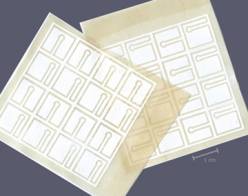World Healthcare Congress showcases affordable global health innovations
4 May 2010
The World Health Care Congress Europe (19-20 May 2010, Brussels), a gathering of health leaders from Europe and around the globe, will present an exhibit featuring innovators who are developing unique and affordable healthcare innovations and programs, particularly to underserved populations.
More than 60 visual displays from non-profit organizations, academic institutions and emerging entrepreneurs will be featured.
Organizations include Almeda of Germany, which will present its medical programme that focuses on telecoaching and telemonitoring to reduce the rising prevalence of chronic heart failure. The event will build upon the success of the WHCC Affordable Health Innovation Exhibit, held in April in Washington, DC.
General submission categories for the poster session include:
- hospitals and health delivery;
- public and population health;
- product and service financing; and
- healthcare research/ mobile health.
The exhibit is part of the WHCC Affordable Health Global Initiative, a website dedicated to sharing health innovations from around the world. Through the site, organizations are invited to share their innovations, find others who are doing similar work, and comment on innovations that are displayed.
Innovations on display at WHCC Europe range from those created by small start-up organizations to global industry leaders. Examples are:
- V-Scan Ultrasound from GE Healthcare, which allows low-cost-affordable ultrasounds thought a compact hand-held device;
-
 A paper-based diagnostic
tool roughly the size of a postage stamp that can be used to detect
numerous diseases has been developed by Diagnostics for All. The
technology was originally developed at Harvard University and
supported in part by the Bill and Melinda Gates Foundation. The
device is printed onto paper using an ink jet printer (see photo
on right showing pages of printed devices — each device is about
1x1cm). Channels and wells are printed onto paper using water
repellent ink. Biological and chemical assay reagents are then
deposited in the wells. When biological samples are applied to
the device, the paper wicks the sample through the channels to
the assay zones (the wells), where the zone changes colour. The
results can be read by comparing the colour with a reference
colour chart printed on the device.
A paper-based diagnostic
tool roughly the size of a postage stamp that can be used to detect
numerous diseases has been developed by Diagnostics for All. The
technology was originally developed at Harvard University and
supported in part by the Bill and Melinda Gates Foundation. The
device is printed onto paper using an ink jet printer (see photo
on right showing pages of printed devices — each device is about
1x1cm). Channels and wells are printed onto paper using water
repellent ink. Biological and chemical assay reagents are then
deposited in the wells. When biological samples are applied to
the device, the paper wicks the sample through the channels to
the assay zones (the wells), where the zone changes colour. The
results can be read by comparing the colour with a reference
colour chart printed on the device. - A health advice telephone service in India, developed by the Health and Management Research Institute, to reach the 'underserved' population in the country. The system is similar to the NHS Direct and NHS 24 telephone-based health advice services in the UK.
- A Brazilian firm that is developing solar-powered hearing aides that allow the hearing-impaired improved quality of life; and
- The Mobisante handheld ultrasound scanner connected to a smartphone that allows health workers to take medical imaging into the community. Patient data and images can be viewed on the smartphone and images can be uploaded via WiFi or a mobile phone network (2G/3G) to a remote server for access by other medical professionals.
About WHCC Europe
The 6th Annual World Health Care Congress — Europe is a major international forum that convenes over 400 leaders from all sectors of healthcare to share the best practices and successful initiatives for improved delivery and outcomes in Europe. The 6th Annual event is sponsored by Abbott, GE Healthcare, Health Dialog, Healthways, Marsh, Orange, Pfizer Health Solutions, PricewaterhouseCoopers, UnitedHealth International and Verisk Health.
Further information
1. The Health Innovations website: www.whcchealthinnovations.com
2. World Healthcare Congress Europe will be held at the Conrad
Brussels Hotel, Brussels, Belgium, 19-20 May 2010:
www.worldcongress.com/events/HR10015/index.cfm?
confCode=HR10015